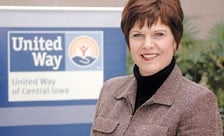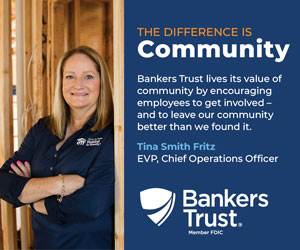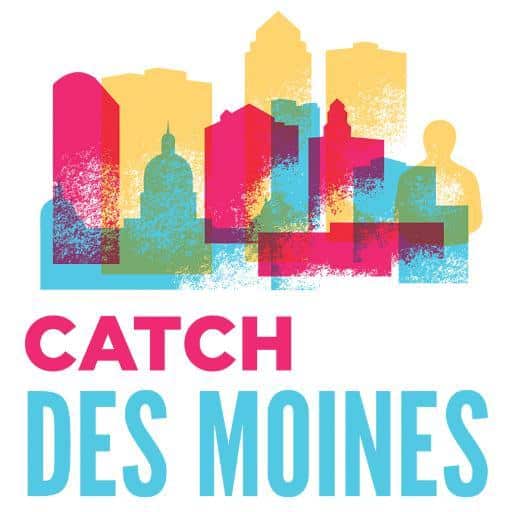Nonprofits finding ways to make ends meet

When it comes to cutting expenses, the last thing area nonprofit organizations want to do is cut services.
So, by and large, they haven’t. Though they have spent the last three years dealing with and recovering from a recession, area nonprofit leaders say they’ve found other ways to reduce costs.
“But we did have to make some funding cuts to organizations,” said United Way of Central Iowa President Shannon Cofield, whose organization recently announced that it reached its goal of $24 million for its 2010 campaign. “We tried to handle those with a lot of communication and transparency as to why that was necessary. But I will say, with all due credit to the nonprofit organizations that we partner with, I felt like while no one was really happy about it, we kind of held hands and realized united we stand, divided we fall – and we’ll get through it. I think, largely, we have.”
United Way’s $24,047,437 fund-raising total in 2010 was the fourth-highest in the organization’s 93-year history in Central Iowa. Although that figure was lower than the $24,385,024 it raised in 2009, United Way discontinued its partnership with the Combined Federal Campaign, which accounted for around $550,000 annually, of which only $13,000 went to United Way. Adjusted, the organization actually raised around $200,000 more in 2010 than 2009, which campaign chair Steve Zumbach called “very important.” The 2009 campaign saw a decrease from the 2008 campaign of more than $600,000.
Zumbach, a partner with the Belin McCormick P.C. law firm, knew that taking on the leadership role in the campaign would be a challenge. To counterbalance Central Iowans’ uneasiness about giving, he said the campaign had to come up with new ideas to raise money.
“This isn’t a static exercise,” he said. “You can’t take the playbook that you did before and simply run the same plays again. You need to be very entrepreneurial in how you are doing it.”
To do that, he said, United Way set goals for different sectors and tried to get each donating business to hit an average based on its sector. Part of that effort focused on expanding the base of donating companies.
The campaign was still $700,000 short of its goal in August – “big trouble,” Zumbach said – causing United Way to ask some companies to try to raise more money per capita from employees.
“I thought it would be difficult. I underestimated how difficult it would be,” Zumbach said. “It was a remarkable performance by our community.”
Cut operations, not services
United Way provides one example of how nonprofit organizations have gotten creative.
Nonprofits have seen a pushback from the economy, said Kristi Knous, vice president for donor relations and community investment at the Community Foundation of Greater Des Moines.
The group did a survey in the winter of 2010 of 80 local nonprofits, and found that 68 percent had identified obtaining funds as a major challenge, and 79 percent characterized themselves as either financially healthy but vulnerable in the future, or as having chronic financial problems.
Despite that, organizations have been reluctant to cut services, as 50 percent predicted services will expand in the next three years, and only 10 percent said services will be reduced.
“One thing that we heard in the survey is that you don’t see them walking away from the need; you see them continuing to step up,” Knous said. “They’ve definitely been cutting training and travel and all those kinds of things first, before they are cutting programs and services. So they’re being as thrifty as they possibly can be in cutting everything so they can still serve those in need.”
Rob Kelly, who recently took over as president of the Make-A-Wish Foundation Iowa chapter and was on the group’s board of directors prior to that, said his charity has seen a decrease in donations, especially from businesses, though things did improve in 2010.
Make-A-Wish, he said, made a point to not cut back on the quality or quantity of wishes it granted. To balance its budget, the organization looked at how it could cut costs by sharing services with the national Make-A-Wish office and focusing more on in-kind giving.
“We’ve continued to deliver those wishes – that’s something we didn’t want to pull back on,” he said. “That’s why we look towards more of these internal methods of managing expenses versus affecting the wish.”
Some organizations are counteracting the economy by merging or creating partnerships. For Rebuilding Together Greater Des Moines, the funding hasn’t decreased but the demand for fixing up homes has increased during the troubled economic times.
To keep up, the organization merged with the Des Moines Neighborhood Resource Office. The obvious drawback to this move was that the combined group had to cut a duplicated position, but merging allowed both groups, who often collaborated anyway, to cut overhead costs such as office rental..
In the Community Foundation survey, 15 percent of respondents said they were pursuing a merger or new partnership, and 23 percent said they were considering one.
“It is a way to save some of the overhead operating cost, because the overhead and the operating costs are the hardest to raise money for when you’re out talking to funders and asking people to donate money,” Rebuilding Together Executive Director Kimberly Hansen said. “That’s basically what we’ve done through the merger is realigned duties so we’re not cutting back on any of the services.”
Giving is ‘in our blood’
Des Moines is faring well compared with other areas, according to the Capital Crossroads Competitive Capacity Assessment released last month.
Per-resident giving in 2010 was $11,685, double the national average and ahead of comparison regions of the Denver, Madison and Omaha metropolitan statistical areas.
“It’s only in the plan because it came up so many times (in surveys and interviews),” Knous said. “It’s in the plan because it came up and it was a concern. I love that about our community. … It has just kind of been in our blood.”
United Way’s Cofield noted that in the 2009 campaign, she had people call who had lost their jobs but still wanted to fulfill their pledge.
“The reason this community does so well – and there can be many reasons why it does well, but I’d put this at the top of the list – is the generosity of the people and businesses,” Zumbach, the 2010 campaign chair, said.










